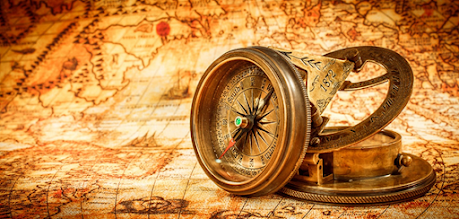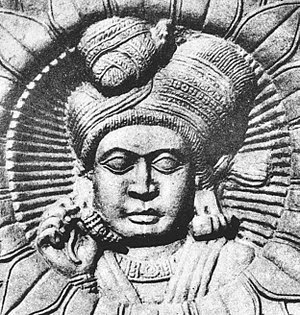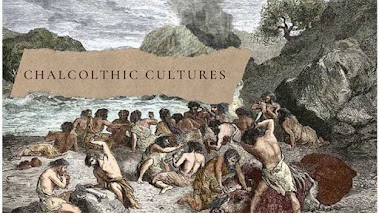Prominent philosophers, artists and scientists of the Renaissance
The word
‘renaissance’ means ‘rebirth’ in French. The Renaissance was a period of
cultural, artistic and scientific rebirth in Europe from the 14th to
the 17th century. The Renaissance eventually gave way to the Enlightenment or the Age of
Reason. It is
believed to have originated in Florence, Italy in the early 1400s. The
Renaissance led to a significant shift in European world view. Art, philosophy
and literature started becoming more human-centric.
A Timeline of important events in the Renaissance
The
Medici Bank created in 1397 eventually became the largest bank in Europe during
the Renaissance, thereby allowing the Medici family to gain political control
over Florence. Having amassed considerable wealth, they became patrons of the
arts and were known to have supported a variety of famous Renaissance artists
including Michelangelo and Leonardo Da Vinci. Cosimo de Medici supported early Renaissance art
and humanism in Florence. This helped establish Florence as the centre of the
Renaissance in Europe. The movement spread from Florence to the neighbouring city-states
of Venice, Rome, Naples, Milan and eventually all of Europe.
Map of Italy during the Renaissance in 1500CE
Map of Europe in 1453 CE
From Da Vinci’s Mona Lisa and The Last Supper to Michelangelo’s statue
of David and Botticelli’s Primavera, the Renaissance gave us a plethora of
artworks- paintings, sculptures and architectural marvels that are considered
to be masterpieces even to this day.
Leonardo Da Vinci (15th April 1452 – 2nd
May 1519):
Leonardo di ser Piero da Vinci was an Italian polymath of the Renaissance. He was a painter, sculptor, draughtsman, engineer, scientist, theorist, and architect. His most famous works include the Mona Lisa, the Vitruvian Man and the Last Supper.
The Last Supper (painted in 1498)
Mona Lisa
Some lesser
known facts about Da Vinci:
He was the illegitimate child of Ser Piero, a wealthy Florentine
notary and a peasant woman named Caterina and his illegitimacy meant he didn’t
have to take up his father’s trade and was free to pursue his own interests. He
received little to none formal education besides basic reading and mathematics.
His first commissions - an altarpiece for the Chapel of St. Bernard (in 1478) and a
painting called ‘The Adoration of the Magi’ for the San Donato monastery
in Florence (in 1481) –were never completed because he had to move to Milan
where he stayed for the next 17 years with the Sforza family under whose
patronage he painted ‘The Last Supper’.
He was a talented
singer and musician and could play the lyre and flute incredibly well. His
surviving manuscripts contain some of his original compositions. He also invented
an organ-viola-harpsichord instrument.
His biggest project,
a statue of Francesco Sforza on horseback called Gran Cavallo or
‘Leonardo’s Horse’ was destroyed by French soldiers when they invaded Milan in
1499. It was supposed to be the largest equestrian statue in the world and Da
Vinci spent 17 years planning it.
Although he was
widely respected as an artist, his scientific inventions had little influence
among his peers at the time since he never made any efforts to get them published.
He was charged with
sodomy in 1476 along with three other young men. The charges were dismissed due
to lack of evidence but he went into hiding in the aftermath of the incident
and only re-emerged in 1478.
Da Vinci left Italy when Francis I of
France offered him the title of “Premier Painter and Engineer and Architect to
the King” in 1515 and spent his final years in France.
Michelangelo Buonarroti (6 March 1475- 18 February 1564):
Michelangelo Buonarroti was
a painter, sculptor, architect and poet and was widely considered one of the
most brilliant artists of his time. His notable works include the Pieta, the
sculpture of David, The Last Judgement and Madonna of Bruges.
Sculpture of David (completed in 1504)
Some lesser known facts about Michelangelo:
In 1496, Michelangelo made a sleeping cupid
figure, treated it with acidic earth to make it seem ancient and then sold it
to a dealer who in turn sold it to an important Cardinal. After finding out
about the fraud, he got his money back but was so impressed by Michelangelo’s
skill that he asked him to accompany him to Rome for a meeting. That was where
he eventually got a commission for one of his most famous works, the Pieta.
In a fit of vanity, Michelangelo carved his
name on the sash running across Mary’s chest to prove that he was the one who
had created the sculpture. He regretted this incident later on and swore to
never sign another artwork of his again. Hence, the Pieta is the only work he
Michelangelo ever signed.
Michelangelo and Da Vinci disliked each other
intensely and would often disrespect each other when given the chance,
according to their biographer Vasari.
David was originally commissioned by the Opera
del Duomo for the Cathedral of Florence. Agostino di Duccio began the project
in 1464 and it was later continued by Antonio Rosselino in 1475. In the end
both these sculptors rejected an enormous block of marble because it had too
many imperfections. Michelangelo studied this block and envisioned the figure
buried within and stripped away layers of rock to reveal David in the end.
He painted his self-portrait in The Last
Judgement of the Sistine Chapel. In the painting, Saint Bartholomew holds the
skin of a person whom people believe to be Michelangelo himself. He was also
the first western artist whose biography was published while he was alive.
He was a skilled poet and was the wealthiest
artist of his time. When he passed away he left an estate worth 50,000 florins
which would be about 50 million dollars in today’s time.
Nicolaus Copernicus (19 February 1473-
24 May 1543):
Nicolaus Copernicus was a Renaissance polymath- a mathematician, astronomer, and Catholic canon. He formulated a model of the universe that placed the Sun rather than Earth at its centre, a heliocentric model.
Copernicus and his heliocentric model
Galileo Galilei
Galileo’s telescope
Some lesser known facts about Copernicus:
He came from a family of merchants and clergy, his
father being a successful copper merchant and his mother’s brother being an
influential Bishop. Two of his three older siblings joined the Catholic Church,
one as a nun and one as a canon.
He was a polyglot. He knew how to speak Polish, German
and Latin and picked up some Italian during his time at Krakow University in
Italy. He read articles in Greek during his studies, leading historians to
believe he knew or understood five languages.
Despite popular belief, he wasn’t the first person to
suggest heliocentrism. Several ancient Greek and Islamic scholars from various
cultures had suggested the idea centuries ago. Copernicus knew this and yet he
deliberately decided to not give them credit. Before submitting his 1543
manuscript, he removed the section on earlier scholars and these extra pages
weren’t found till about 300 years later.
He was also an economist and wrote a research paper
with proposals for how the Polish monarch could simplify the country’s multiple
currencies. His ideas on inflation and supply and demand influenced later
economic principles. He was also a physician, having studied medicine in the
University of Padua. He left after two years, and hence never got his doctoral
degree.
Since he was an official in the Catholic Church, he
took a vow of celibacy and took care of his sister’s children after her death.
But it is rumored that he may have had an affair with his housekeeper, Anna
Schilling in his sixties. The bishop he worked under admonished him several
times for having Anna live with him for unknown reasons.
He spent over a decade studying at universities across
Italy and Poland and left four universities before he got a degree. Since
everyone believed in geocentrism during the time and the Catholic Church was
cracking down on dissidents he was cautious about circulating his manuscript
and publicizing his views. He finally published his manuscript on his deathbed
in 1543.
Galileo was charged with heresy by the Church because
he agreed with Copernicus’s views about heliocentrism publicly even though he
had dedicated his book to the Pope.
Copernicus’s remains weren’t found till 2005 since
archaeologists weren’t sure of the exact location of his grave.
Galileo Galilei (15 February 1564- 8 January 1642):
Galileo di Vincenzo Bonaiuti de' Galilei was an Italian astronomer,
physicist and engineer from the city of Pisa, then part of Florence. He studied speed and velocity,
gravity, free fall, the principle of relativity, inertia, projectile motion and
also worked in applied science.
Some lesser known facts about
Galileo:
Due to his exceptional intelligence, he was sent to study in the
University of Pisa at the age of 16. In 1585, financial difficulties forced him
to drop out. He made a comeback in the year 1589 as a professor of mathematics
in that very institute.
He is credited with a variety of inventions,
including the thermoscope and sectors or military compasses which were used for multiplication and division
and finding square and cube roots. He sold some of these inventions to
supplement his income while he was a professor.
In 1609, he learned of the invention of the telescope in the Netherlands
by Hans Lippershey and decided to make
something similar of his own. He managed to increase the magnifying power to
20-30 times the object size. Even though he didn’t invent the telescope, he was
one of the first people to point it towards the sky.
His outspoken advocacy of the belief landed him in
trouble with the Catholic Church. He was charged with heresy and was sentenced
to spend his remaining life in house arrest.
He continued working while being under house arrest
and had started losing his eyesight presumably because of a cataract. By 1638,
he had become completely blind.
References:
·
https://www.historycrunch.com/florence-in-the-renaissance.html#/
·
https://www.thoughtco.com/renaissance-timeline-4158077
·
https://www.historyhit.com/facts-you-might-not-know-about-leonardo-da-vinci/
·
https://www.mentalfloss.com/article/533458/facts-about-nicolaus-copernicus
·
https://www.michelangelo.org/michelangelo-facts.jsp
·
https://www.discovermagazine.com/planet-earth/12-fascinating-facts-about-galileo-galilei
Image References:
·
https://www.historycrunch.com/uploads/4/1/1/6/41169839/renaissance-city-states-map_orig.png
·
https://i.natgeofe.com/n/37c3c776-b8cb-4be1-988a-cf593c776b88/01-leonardo-da-vinci-book-talk_2x3.jpg
·
https://mymodernmet.com/wp/wp-content/uploads/2017/06/michelangelo-david-statue-thumbnail.jpg
·
https://artincontext.org/wp-content/uploads/2021/01/Michelangelo-Pieta-848x530.jpg
·
https://cdn.britannica.com/52/752-050-CA91D3CB/Two-Galileo-telescopes-Institute-and-Museum-of.jpg
·
https://i.natgeofe.com/n/b633e850-15d5-4768-bec6-c1a65d88e1d5/13-his-life-work_4x3.jpg
NOTE :-
This blog is meant for Educational Purpose only .We
do not own any Copyrights related to images and information , all the rights go
to their respective owners . The sole purpose of this blog is to educate,
inspire, empower and to create awareness in the viewers. The usage is
non-commercial (Not For Profit) and we do not make any money from it.
BLOG CREDITS: Rukmini Nazre (Team Historic
Wednesday)
FOLLOW US ON:-
INSTAGRAM
:
https://bit.ly/coep_blogs_insta
LINKEDIN:
https://bit.ly/coep_blogs_linkedIn
YOUTUBE:-















Comments
Post a Comment